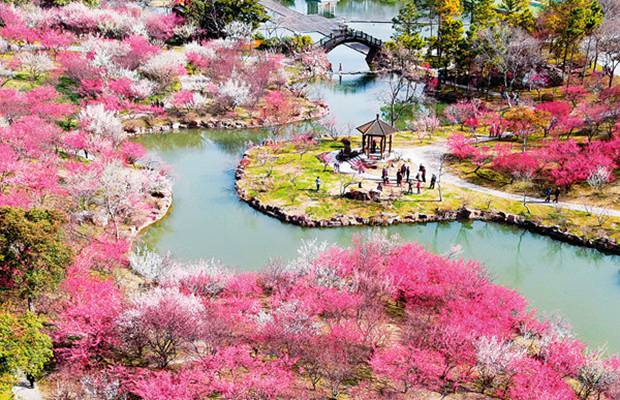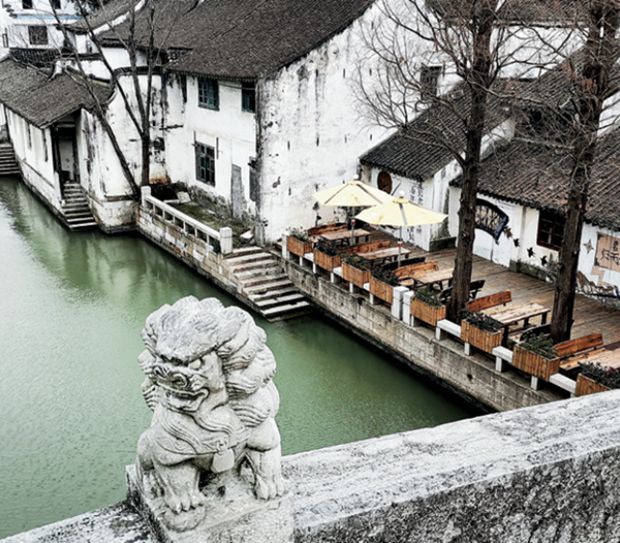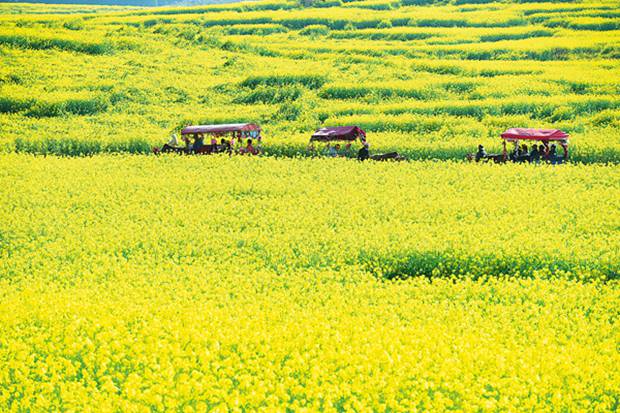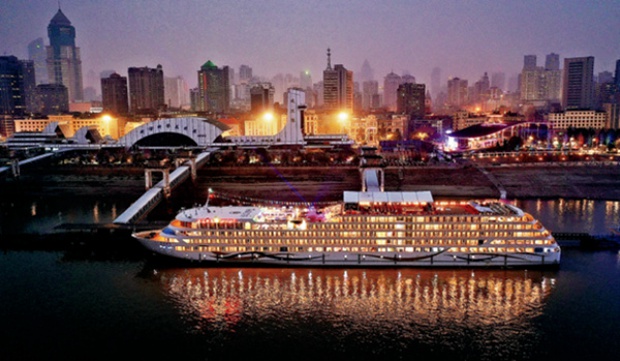Tourism industry cites consumer demand and supportive policy measures as key factors in securing the sector's post-pandemic growth, Yang Feiyue reports.
Despite remaining challenges from the pandemic fallout, domestic tourism players are seeing light at the end of the tunnel, especially with a recently announced support policy.
In January, Chen Xianghong appealed for more government support for the tourism industry and, a month later, he got his wish.
Chen was chair of a service provider for resources analysis, planning and landscaping design for domestic tourist attractions.
He considers it of utmost importance for tourism players to continue persevering after two years of struggle amid the pandemic, which has prompted authorities to extend aid to the industry.
"I believe the tourism industry will rebound to even greater heights after the pandemic situation gets better," Chen says.
While he is asking for more confidence in the industry, in mid-February, the National Development and Reform Commission, along with several other government departments, released measures to shore up support for micro, small, and medium-sized enterprises in the sector.

Yangzhou's Slender West Lake scenic area in Jiangsu province.[Photo/Xinhua]
The NDRC outlines 43 policy measures to provide fiscal and logistical support for service industry businesses that have been particularly hard hit by the pandemic.
The policy covers the extension of tax reductions and exemptions, fiscal support measures, and help with implementing COVID-19 prevention measures.
Tourism has seen a significant impact from the pandemic.
About 251 million trips were made during the 2022 Lunar New Year holiday, one of the country's busiest travel seasons, according to the Ministry of Culture and Tourism. It was a 2 percent decrease from 2020, despite a recovery in domestic travel in 2021.
With the pandemic raging abroad, international travel has almost ground to a complete halt.
The China Tourism Academy recently lowered its tourism development expectations for 2022 and pointed out that the pandemic will still be the most uncertain factor affecting tourism recovery.
In the academy's 2022 tourism development forecast report, the domestic tourism industry is expected to recover to 70 percent of pre-pandemic levels.
The domestic tourism market is likely to welcome 3.98 billion traveler visits, up 16 percent from last year, and domestic tourism income will grow 27 percent year-on-year to 3.8 trillion yuan ($600 billion), according to the report.
The number of inbound and outbound tourists in 2022 is expected to grow 20 percent year-on-year, recovering to 20-30 percent of the 2019 level.

Cangcheng town in Shanghai features ancient buildings.[Photo provided to China Daily]
The World Tourism Organization, a specialized agency of the United Nations, in January, predicted that tourism around the world is not expected to return to the pre-pandemic levels until 2024 at the earliest.
The measures specifically tailored for tourism sectors include extending the policy to temporarily refund travel agencies' service quality deposits in 2022, which was first implemented in 2020. The refund rate will remain at 80 percent for eligible travel agencies.
Banking and financial institutions are encouraged to increase the credit supply for the tourism industry and reduce, within reason, interest rates for new loans.
Qualified tourism businesses are encouraged to issue corporate credit bonds, and financing channels for tourism enterprises are allowed to expand. Banking and financial institutions are also encouraged to provide small loans to individual industrial and commercial merchants, such as tourism-related start-ups and themed homestays.
The measures will see a rain of support, easing the drought that has plagued the tourism sector over the past two years.
Wu Liyun, associate professor from the China Academy of Culture and Tourism with the Beijing International Studies University, believes the measures are practical and will benefit tourism enterprises by bringing more business opportunities.
"They can help reduce the financial pressure on the daily operations of tourism enterprises," Wu says.

Tourists immerse themselves in the vibrancy of rapeseed flowers in Luoping, Yunnan province.[Photo/Xinhua]
"Also, some possible financial support will be in place, which is of great importance for sustainable development of the tourism companies."
Cheng Chaogong, a lead researcher from the tourism research institute of the Tongcheng International Travel Service, says the rescue policy has more tools with greater support, compared with previous measures.
The relief policy has also covered practically every link in the tourism industry chain, from travel agencies to many sub sectors, such as hotels and tourist resorts, Cheng adds.
The policy has shown the market players the determination of the government to help tide the tourism industry over during these tough times and will provide tourism personnel with confidence, says Dai Bin, president of the China Tourism Academy.
Dai expects the tourism industry to enter a strong period of recovery under the policy.
"The tourism market will face more difficulties and challenges, but the upward process of recovery will not stop," Dai says, adding that the fundamental needs for culture, leisure and science will be further released this year.
Consulting firm McKinsey and Co's latest survey indicates an emerging pattern of periods of suppressed travel demand followed by a quick recovery.
Although Chinese consumer confidence is growing, desire for travel has shown a faltering recovery due to sporadic COVID-19 outbreaks, according to the company's outlook for China tourism in 2022.
Consumer confidence is now at the highest level since the start of the pandemic, the outlook suggests. As confidence grows, consumer spending is also showing signs of recovery.
Furthermore, travelers' preferences are shifting, with implications for travel companies.
The latest McKinsey survey shows that travelers are looking forward to visiting new attractions, but due to travel policies, nearly half of respondents said a short trip to a new site is their No 1 choice.

A spectacular sea of clouds draws visitors to Shitan village in Shexian county, Anhui province.[Photo provided to China Daily]
This preference provides opportunities for tourism companies to attract in-city demand, the survey says.
In terms of expectations around what travelers wish to experience on their trips, interest in visiting cultural or historical sites has reached 44 percent and is now the second most favored activity, right next to outdoor scenic destinations, which remain the most popular.
The survey also found travelers wish to learn something new or have a transformative personal experience during their leisure travel.
Liang Jianzhang, co-founder of the country's major online travel agency Trip.com Group, is optimistic about this year's tourism market.
"The international market in Europe and the United States has recovered quite well, and has recovered to half of that before the pandemic, but the Asian market has not improved, but I believe it will catch up soon," Liang says.
The online travel agency claims it will continue to work with industry partners to deal with the pandemic and the recovery of the tourism market worldwide.
"We will make travel more interactive, immersive and interesting," Liang said at the agency's global suppliers meeting in Macao in December.
Liang says he met with tourism delegates from many countries, including the United Kingdom, Austria, Spain and Portugal, and adds that those overseas destinations are all looking forward to the return of Chinese travelers.

A cruise ship embarks on a Yangtze River journey from Wuhan, Hubei province.[Photo provided to China Daily]














